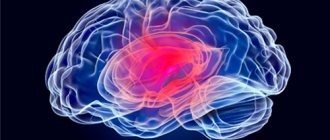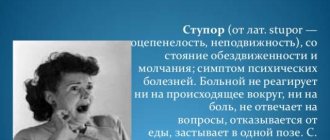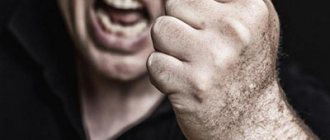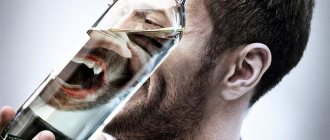According to ICD-10, anxiety-phobic disorder is a whole group of disorders, neurotic forms of diseases, accompanied by unreasonable, irrational fear and causeless anxiety.
Such behavioral, physical and cognitive experiences arise in a person in certain situations or during contact with any object, as well as “in anticipation” of these moments. This disorder is very common, affecting (to varying degrees of severity) 5% of the world's population. It usually accompanies OCD, neurosis, psychasthenia, and is present in half of patients with mental and neurological diseases. As for the “age qualification”, these are people from 25 to 45 years old, most of whom are women.
Types of anxiety-phobic disorder
Currently, more than five hundred phobias have been studied. Experts have divided them into three broad groups: specific (simple), social phobias, and agoraphobia.
Simple phobias
These include fear of an action, situation, or object. This could be a fear of the dark, certain animals (dogs, spiders, snakes, insects), openings, air travel, darkness, enclosed spaces, blood, heights, disease, etc.
As a rule, such absurd fears develop in a small child during the period when he begins to explore the world. For some people they disappear as they grow up, while for others they remain for the rest of their lives.
Social phobias
People suffering from them are afraid of attention from others and negative evaluation of what they do. Therefore, such individuals try to avoid public speaking, being in society, parties, crowded places, answering at the blackboard at school or university, calling unfamiliar subscribers, etc. This phobia usually develops during adolescence.
Social phobes fear that outsiders will seem ridiculous, inadequate, and strange. They are also concerned about their own reaction to anxiety: voice trembling, facial flushing, hand trembling, nausea.
Agoraphobia
This is the fear of being in a situation from which it is difficult to get out or where help cannot be provided in a timely manner. It appears in people after 20 years of age.
Agarophobes are afraid to go to a store, theater, cinema, travel in public transport, a car and an elevator, be left alone in an apartment, be away from home, in open spaces. As the disorder progresses, it expands its boundaries, that is, there are more and more disturbing situations, and as a result, the person, trying to avoid them, becomes a recluse.
In addition to phobias, anxiety-phobic disorders include pathologies that have pronounced behavioral and cognitive symptoms, with a strong reaction of the body to fear.
- panic attacks;
- generalized anxiety disorder;
- attacks of the Da Costa syndrome type.
Clinical manifestations of phobic neurosis
As a rule, most of the time the patient feels completely normal. However, if you have to “meet your fear”, which cannot be avoided (for example, during an upcoming flight with aerophobia, or the need to climb to a height with acrophobia), the following arise:
- dry mouth, difficulty swallowing;
- discomfort in the abdomen, chest;
- attack of diarrhea;
- increased heart rate, shortness of breath;
- feeling of lack of oxygen;
- increased urge to urinate;
- tinnitus, blurred vision;
- chills or vice versa, hot flashes;
- headache (may persist even after the excess);
- hand tremors;
- local hyperhidrosis (usually sweaty palms, face, armpits).
If the object of the phobia is directly related to everyday household or professional activities, the symptoms of phobic neurosis progress. Possible sleep disturbances, decreased libido, lack of erection in men, amenorrhea in women.
Features and risk group
In a patient with this neurotic disorder, only some aspects of mental activity are affected, while his personality does not suffer. Such a person’s thinking is quite normal, there are no hallucinations, delusions, or psychoses. He is clearly aware of his pathology, but he cannot do anything: he is constantly nervous, worried, and does not feel safe.
This discomfort significantly affects the entire life of an individual, preventing him from existing normally in society, from working, studying, relaxing, and realizing himself creatively.
Anxiety-phobic disorder affects people with neuroses, a choleric type of character, who are unable to overcome stress. The large proportion of women in statistics is due to the fact that hormonal surges during pregnancy and the postpartum period can push them towards it. Hormonal changes can affect children during puberty in the same way.
Another option is the influence of parents. For example, the child of a woman who was terribly afraid of cockroaches and demonstrated this at every “meeting” with them, will also have this attitude towards these insects.
People who are suspicious, irritable, and dependent on other people’s opinions are also at risk.
What is Anxiety Disorder
A person experiences various anxieties throughout his life.
As a rule, they are a reaction to stressful situations occurring in everyday life, at work, and so on. However, we can talk about anxiety disorder as a disease only in cases where systematic anxiety significantly affects a person’s quality of life and forces him to adjust his lifestyle. Symptoms of anxiety disorders are extremely unique and depend on the type of disease. Today, there are generalized disorder and adaptive disorder, which has an alarming increase. Generalized anxiety disorder is characterized by constant excessive anxiety that envelops the patient in almost any situation, even the most mundane. In turn, people with adaptive anxiety disorder have difficulty adapting to stressful situations. Constant fear, worry, tension and anxiety in this disease can affect the functioning of various organs and systems: a person may be subject to rapid heartbeat, shortness of breath, a “nervous” stomach, and so on.
Causes
As is the case with most mental illnesses, experts cannot name the exact reasons for the development of anxiety-phobic disorder. But we can definitely say that a whole complex of factors contributes to this:
- Heredity. Very often, the patient’s family history contains ancestors with a tendency to excessive uncontrolled reactions to any stimulus, neurotic deviations. This allows us to assert that such pathology can be transmitted by genes with inherent disturbances in the biochemical processes occurring in the central nervous system.
- Personality characteristics - vulnerability, tendency to depression, suspiciousness, anxiety, suspicion, inability to deal with stress. People with this type of character and temperament depend on the opinions of others, are not confident in themselves, and do not like criticism. Their habit is to analyze the situation for a long time and fixate on internal sensations. They consider even very small changes dangerous.
- Depression, neurosis, hypochondria, developing against the background of long loneliness, seclusion, loss of a loved one, separation from a loved one.
- Features of education. The child “absorbs” the specifics of the parents’ behavior and develops a similar algorithm for responding to a stressful situation. If his close relatives focus on a certain irritant and are afraid of it, then the baby will have the same depth of feelings about the same object or situation. Punishment, family conflicts, poor financial condition, and the death of a parent also make a negative contribution to the formation of phobias.
- Hormonal “shake-up” of the body - puberty, pregnancy, postpartum period.
- Violation of the production of mediators and their exchange. A deficiency of biologically active substances leads to severe abnormal fear, among other neurotic reactions.
- Use of psychotropics, narcotic substances, alcoholic beverages, smoking (nicotine has stimulating properties).
- Chronic diseases. This factor still has the status of a hypothesis, but it deserves recognition. With glycemia, a person experiences obsessive fear, anxiety for no apparent reason, agitation, and irrational anxiety. These are symptoms of an anxiety-phobic disorder. Almost the same thing happens with excessive secretion of thyroid hormones, pheochromocytoma (tumor of the adrenal medulla). Panic attacks are also common in patients with mitral valve prolapse.
What is this
Anxiety disorder is a painful condition characterized by increased anxiety.
This is a large group of conditions that are heterogeneous in their causes and mechanisms of development: from mental disorders to overwork and reactions to stress. According to doctors and scientists, the prevalence of anxiety disorders is very high; almost every person has experienced anxiety that causes discomfort at least once in their life.
Read more about anxiety HERE.
Symptoms
It is worth recalling once again that with anxiety-phobic disorder, symptoms appear when getting into a situation or encountering an object of fear, and even when thinking about them.
The most common manifestation is a panic attack . Anxiety quickly rolls over a person, he is gripped by the fear of death, feels a physical catastrophe, is afraid of going crazy, and completely loses control over himself. The pressure rises, the heart beats quickly, there is not enough air, unbearable compression and pain arise in the chest. You sweat profusely, your muscles become weak, you feel dizzy, your gait becomes unsteady, you lose your balance, your stomach gets upset, you want to go to the toilet. All this lasts a few minutes.
Other symptoms are similar to manifestations of Da Costa syndrome (another name is cardiophobia) , which is characterized by attacks similar to severe heart and vascular diseases. The individual experiences what is called animal fear, accompanied by intense vegetative manifestations. The heart rhythm becomes erratic, blood pressure jumps, breathing is disrupted, and there is severe pain in the chest.
Neurotic disorder also exhibits symptoms of generalized anxiety disorder . The patient experiences an incomprehensible anxiety that is not associated with any circumstances. He is constantly tense, unable to relax, and afraid of something. It is difficult for him to fall asleep, and if he does, the sleep is restless, with nightmares and frequent awakenings, during which the anxiety becomes simply unbearable.
Irrational fear and the accompanying reactions of the autonomic system lead to the fact that a person begins to avoid places where he may have an attack. Even if accompanied by someone, he cannot afford to go there. In order to prevent ending up in such a place, the individual develops a special strategy: he makes a detour route, does not use public transport, does not use the elevator, leads a reclusive life if he is afraid of the crowd, or, conversely, strives to be in it if he is afraid of loneliness.
The patient consciously shrinks his social circle, does not want to be in society, and is unable to set goals and achieve them. He cannot concentrate due to unpleasant internal disturbing sensations, cannot think logically and clearly, his memory fails him.
As a result: problems at work, personal life suffers, its quality, career, etc. And the further it goes, the worse it gets. That is why anxiety-phobic disorders must be treated immediately by contacting specialists. In Moscow they can be found at the City Psychoendocrinological Center (MGPEC).
Don't waste time and go to the doctor if:
- the above symptoms are severe and uncontrollable;
- anxiety does not go away for a long time, even if the stressful situation is far behind;
- fear finds without reason;
- fear and anxiety are accompanied by negative somatic symptoms;
- Anxiety and physical manifestations have a negative impact on personal and social life.
ANXIOUS LIFE
Patients with anxiety and phobias are a permanent contingent of doctors of various specialties.
As part of an online seminar organized by the educational center for distance learning "Pharmamed.RF", Ivan Martynikhin , Associate Professor of the Department of Psychiatry and Narcology of the First St. Petersburg Medical University. acad. I.P. Pavlova, PhD, psychotherapist, spoke about the causes of anxiety and phobic disorders, their taxonomy, and modern approaches to treatment.
Anxiety is a non-specific phenomenon. It can be adaptive, pathological, part of character, appear as an emotional reaction to stress, up to affective-shock reactions, a symptom of a variety of mental problems, and also part of somatic diseases. For example, if a person has something in pain, the pain signals him that he needs to mobilize his strength and find the source of trouble. Anxiety allows him to do this.
Anxiety disorders are the most common group of mental disorders. Although depression is widespread in a population and its burden is greater than anxiety because depression leads to more severe functional changes and sometimes results in suicide, the prevalence of depression is nevertheless lower than that of anxiety disorders. According to global data, even addictions (3.8%), including alcoholism, are less common than anxiety disorders. 6.7% of the world's population suffers from anxiety disorders, mood disorders, including depression - 5.4%.
Anxiety disorder is 15 times more common in the population than schizophrenia, and due to the fact that schizophrenia is a serious illness with serious consequences, it turns out that in psychiatric services patients are predominantly with schizophrenia, while anxiety disorder, despite its high prevalence , we see among doctors of various specialties, but not among psychiatrists. And the appeal to doctors with such phobias, such as claustrophobia, is low, because a person can avoid frightening situations (not use the elevator), and this does not greatly affect life, however, when conducting special structured interviews (diagnostics), it turned out that Among anxiety-phobic disorders, simple phobias occupy a leading position.
Social phobia is in second place; it is generally rarely (especially in our country) considered a reason to consult a doctor, more often a psychologist, and people simply avoid situations that cause social phobia. But generalized anxiety and panic disorders are those conditions that lead patients not to psychiatrists, but to doctors of various specialties.
According to WHO, depressive disorders rank first in terms of the number of days of working life expected to be lost and can lead to a shortening of life. If we talk about anxiety disorders, they rank sixth among all medical conditions in terms of burden (losses).
In Russia, there is insufficient diagnosis of both depressive and anxiety disorders. According to epidemiological studies, 6.7% of the world population suffers from anxiety disorders. Similar studies have not been conducted in our country, but it is difficult to expect that we have fewer of them. According to official statistics from the Russian Ministry of Health, 0.3% of the population suffers from neurotic diseases associated with stress and somatoform disorders. It turns out, as with depression, we have 30–40 times (!) fewer diagnoses of “anxiety disorder” than we should have according to epidemiological data.
Why don’t patients with anxiety disorders go to psychiatric services, but rather turn to somatic doctors more often? First of all, due to the low availability of mental health care and the stigmatization of mental health services. Secondly, with a high comorbidity of anxiety disorders and somatic diseases. Thirdly, with somatic manifestations of anxiety. Fourthly, with the fact that the content of experiences often becomes somatic illnesses.
Anxiety is an independent factor in the development, for example, of hypertension and ischemic diseases, and death from cardiovascular diseases.
CLINICAL PICTURE OF ANXIETY AND FEAR
What does a patient with anxiety look like? If we recall the assessment of a person’s mental status, it consists of two components: conversation and observation of the patient. During the conversation, you can identify the person’s characteristics and his complaints. And observation carries a lot of useful information. Any doctor begins observation from the moment the patient crosses the threshold of his office.
An anxious patient is distinguished by:
- movements (fussiness, the patient moves his hands through things, documents, pulls his hair, cannot sit still);
- fast, confused, assertive, hurried, detailed speech;
- On physical examination, he has an increased heart rate, blood pressure, muscle tension, tremors, sweating or chills, etc.
- One of the leading complaints is sleep disturbance, increased fatigue, difficulty concentrating, and increased sensitivity to irritants (hyperesthesia).
When describing their mental state, patients with anxiety disorders talk about anxiety, internal tension, excitement, worry, and fear. But some patients deny their condition, saying that everything is fine with them.
Anxiety is the experience of emotional discomfort associated with the expectation of trouble, the premonition of impending danger - this definition is given in the “Big Psychological Dictionary” of 2002. Sensations are directed towards the future. They can be prevented, according to the patient. In this regard, thinking accelerates and motor excitation increases in an attempt to escape from a threatening situation. Anxiety must be distinguished from fear. Anxiety is the experience of an uncertain threat, and fear is a reaction to a specific danger.
Anxiety and fear are a physiological mechanism that can be adaptive if it is not very strongly expressed and is associated with an objective situation of threat. It mobilizes the body's resources and increases its readiness to cope with the situation. And maladaptive, when anxiety is not associated with an objective situation of threat or the likelihood and significance of the threat are significantly exaggerated, disorganize human behavior (functional disorders) or cause significant discomfort.
Manifestations of anxiety are divided into different groups:
- physical (rapid heartbeat, shortness of breath, muscle tension, nausea, headaches, etc.);
- behavioral (inability to sit still, need to move, fidgeting with objects, smoking, etc.);
- emotional (excessive feelings of fear, disappointment, anger, depression, helplessness, worthlessness, crying or laughing, etc.);
- cognitive (“emptiness in the head” or “race of thoughts”, difficulties concentrating, negative thoughts, fear, comparing oneself with others, etc.).
Anxiety states can be assessed according to very different parameters. These are the severity of clinical manifestations, functional consequences, duration, connection with specific “stressors”, connection with other symptoms.
Anxiety can be a reaction, a state and a property.
Unlike depression, anxiety can also be an emotional reaction, as a response to some situation, an emotional state, i.e. more stable, without objectivity, influencing the entire neuropsychic tone of a person and his behavior, and anxiety can also be a manifestation of an emotional property, a stable characteristic of the emotional sphere of an individual, either congenital or acquired.
Anxiety is pointless, fear is objective, however, in clinical practice there is a problem with the correct assessment of the causes of fear and worries, because the patient’s anxiety is always refracted through his specific life situation; complaints first include specific circumstances. Anxiety makes you see all life circumstances in a negative (threatening) light. To separate anxiety from fear, you need to ask the patient what else, besides health, worries him (family, money, personal relationships)? If it turns out that these areas are full of negativity, then most likely this is an anxious state.
Another thing is obsessive fear (phobia) - this is an intense, irresistible, unreasonable fear. Phobias refer to obsessive phenomena, which are characterized by: involuntary occurrence (in addition to will and desire); at the same time, the patient has a critical attitude (understanding of pain), which distinguishes phobias from delusional ideas, which are fixed, and it is useless to convince the person; There are unsuccessful attempts to combat phobias. For example, aerophobia, when a person is afraid of flying on airplanes. We all worry when boarding a plane; the sky is not a very common environment for humans, but most of those who do not experience aerophobia can control their feelings (remember statistics, etc.). Feeling nervous before a flight is normal, it is not a pathological condition. It’s another matter when a person’s fear is so intense that the person incorrectly assesses the likelihood of a catastrophe, he overthinks himself, and is sure that a misfortune will happen to him. The fear is so pronounced that the person refuses to fly.
There are more than 300 phobias. In the international classification of diseases, there are 4 groups of phobias:
- nosophobia (fear of getting a serious illness), they form hypochondriacal disorder;
- agoraphobia (fear of open spaces, crowds of people, being left without help), is associated with panic attacks, when short attacks of severe anxiety occur with vegetative disorders and fear of death, leads to avoidant behavior, agoraphobia is worse than claustrophobia, the latter is easier to avoid;
- social phobia (fear of performing any actions in the presence of other people, speaking, blushing, etc.); social phobics are sensitive to many aspects of communication with a doctor, doctors often criticize patients in order to motivate them, and the social phobic thinks that he is being judged, and therefore shuts down;
- simple (isolated) phobias - all others (claustrophobia, hypsophobia, etc.). The fear of swallowing (phagophobia) should be highlighted here; this is important for doctors. One of the somatic (bodily) experiences of anxiety is a spasm (lump) in the throat, difficulty swallowing. It is necessary to clarify this point before prescribing “major” medications. Some people grind the tablets in a coffee grinder and take them with a spoon, but in this case the response to therapy will be incorrect.
HYPOCHONDRIA
These are unfounded or exaggerated fears of the patient for his health, a search for any disease in himself in the absence of its objective signs.
Hypochondriacal experiences can be:
- obsessive (nosophobia), patients go to doctors to “get checked” and calm down for a while;
- delusional, when a person has a fixed idea, confidence in the presence of an illness, diagnosis does not interest him;
- overvalued (excessive passion (to the point of absurdity) for a certain well-known method of treatment or recovery, which is harmful to one’s health). An example is urine therapy, various diets.
ANXIETY AND FEAR-RELATED DISORDERS
The causes of anxiety can be a normal situational reaction, a reaction to stress, one of the symptoms of various neurological and mental disorders, one of the symptoms of a somatic illness, and anxiety and phobic disorders in the proper sense of the word.
In the International Classification of Diseases (ICD) 1992, the term “neurosis” was replaced by the term “disorder.” Neurosis is an outdated and differently understood term.
The draft ICD-11, which should be approved this year, has a separate chapter “Anxiety and phobic disorders”, and “disorders directly related to stress” and “obsessive-compulsive spectrum disorders” are separated into separate chapters.
The modern understanding of the genesis of anxiety-phobic disorders is considered as the concept of “vulnerability - stress”, where vulnerability can be biological (heredity plays an important role), psychological and social, and stress as unfavorable life factors. All mental disorders often manifest themselves under the influence of stress. Stress is also a trigger mechanism for anxiety disorders.
In the ICD, panic disorder is coded F41.0. A panic attack is an attack of severe anxiety (panic) that occurs suddenly, is short-term, reaches a peak within a few minutes, and is manifested by severe autonomic disorders (palpitations, dizziness, lack of air, etc.).
F41.1 - generalized anxiety disorder, when anxiety is persistent.
In the treatment of phobic and anxious conditions, a bio-psycho-social approach is used, where bio is antidepressants, anxiolytics, psycho is psychotherapy, treatment using methods of rational psychotherapy (anxiety is considered as a lack of information, patient schools are organized, anxiety is rationalized), suggestive therapy ( suggestion, hypnosis). But cognitive behavioral psychotherapy is the most effective.
Correct assessment of the nature of anxiety is important for choosing drug therapy. Treatment should focus on two aspects: relief of symptoms “here and now” or treatment of the disorder, and effectiveness and safety.
Treatment
A doctor - a psychiatrist, psychologist or psychotherapist - diagnoses an anxiety disorder through a conversation with the patient and special questionnaires. He also needs to exclude the presence of diseases not related to the mental state (cardiovascular, neurological, etc.). If they are available, then other specialists will already deal with them.
The mechanism of fear occurrence has now been fully studied. Therefore, treatment of anxiety-phobic disorders, of course, in case of timely access to qualified specialists, has excellent positive results. There are pharmacological and psychotherapeutic methods for this.
Use of drugs
Pharmacological agents are the basis for the treatment of anxiety-phobic disorders. They help relieve acute symptoms of pathology and normalize the patient’s psycho-emotional state. Treatment uses tranquilizers, antidepressants, and sleeping pills. They are prescribed, prescribed and given recommendations for admission exclusively by a psychotherapist or psychiatrist.
1. Antidepressants - treatment begins with their prescription, since they do not act immediately, but after 4-8 weeks. In order not to cause side effects, of which there are many, the doctor first prescribes the drug in small doses, gradually increasing it depending on the patient’s tolerability of the drug.
Information is constantly exchanged between the nerve cells that make up the human brain. The conductor is chemical messengers. They are involved in the formation of feelings of fear, anxiety, and stress, and this happens due to a decrease in the level of neurotransmitters in them - serotonin (“the hormone of happiness”) and an increase in norepinephrine (which has a vasoconstrictor and pressor effect). Antidepressants stabilize their quantity, thereby eliminating anxiety, lowering blood pressure, and calming the heart.
2. Tranquilizers - psychotropic, sedatives that reduce anxiety and anxiety, eliminating panic. Usually these are drugs from the antixiolytic group - benzodiazepines, delicate daytime remedies with a mild and quick action, which are taken in a short course. Their calming effect is due to their inhibitory effect on brain cells and muscle relaxation, which reduces physical stress.
3. Sleeping pills . They are necessary for those patients who suffer from insomnia. Take them for a short period (no more than 4 weeks) right before bed.
All of the above medications have certain side effects, varying degrees of addiction and withdrawal symptoms.
Principles of non-drug and drug treatment
Contrary to popular belief, it is extremely difficult to get rid of phobic neurosis on your own. With a pronounced anxiety component, even one course of psychotherapy is not enough; after 3–6 months, meetings with a psychologist are again necessary.
The basis of treatment is behavioral, rational, cognitive therapy and psychoanalysis. The doctor understands in detail the causes of the disorder and “works through” them with the patient. Good results are achieved by the tactics of artificially modeling fear and teaching the patient self-control. A person is told about various relaxation techniques, moderate physical activity is recommended, and many people find yoga, stretching, and Pilates helpful.
However, the results of psychotherapy do not develop immediately, so sometimes drug treatment is prescribed to relieve acute symptoms. Apply:
- anxiolytics;
- benzodiazepines;
- adrenergic locators for the relief of cardiovascular disorders;
- antidepressants.
Improvement in well-being is not an indication for stopping medication or psychotherapy. The patient is prescribed “milder” sedatives and neuroprotectors to normalize sleep.
Causes of Anxiety Disorder
The causes of anxiety disorders are explained by several theories from a biological and psychological point of view.
Biological theories. According to these theories, the disease is explained as a kind of biological anomaly caused by certain changes in the body. The most popular version of the occurrence of anxiety disorders is an increase in the production of neurotransmitters.
We should not exclude the possibility that it is the locus coeruleus that is responsible for the symptoms of the disease. It is located in the brain, namely in the stem part of it, and with electrical stimulation it becomes the cause of anxiety and fear. Medications that reduce the activity of the locus coeruleus and therefore reduce anxiety include propranolol, clonidine, and benzodiazepines. In turn, medications like yohimbine increase anxiety.
Psychological theories. From the point of view of psychoanalysis, anxiety is a manifestation that signals the presence of a forbidden need or a certain impulse that needs to be hidden and prevented from expressing the need. According to this theory, the symptoms of anxiety disorders are explained as containing an unacceptable need within oneself.
Phobias and anxieties in general, from the point of view of behaviorism, are considered as a reflex reaction to the sudden or expected appearance of frightening or painful stimuli. The brain gets used to this reaction and soon anxiety begins to arise regardless of whether there is a stimulus or not.
More recently, cognitive psychology has emphasized erroneous and distorted mental patterns that precede the onset of anxiety symptoms. For example, with anxiety disorders, patients may react in panic to seemingly standard sensations and ailments in everyday life (palpitations, mild headache). As a result, fear intensifies, and over time it grows and leads to a powerful panic attack. In domestic medicine, anxiety disorders are classified as a group of functional neuroses (a more modern name is neurotic disorders). According to the traditional classification, the disease is classified as psychogenic, which is characterized by awareness of the disease, a variety of symptoms and manifestations, as well as a complete absence of changes in consciousness.
Diagnosis of an anxiety disorder
The presence of the above symptoms does not yet indicate the disease. The diagnosis must be made by a psychiatrist, and in order for the specialist to recognize the problem and confirm the presence of the disease, the symptoms of anxiety disorders must bother the patient for at least 2-3 weeks.
Anxiety disorders diagnose . But identifying the type of anxiety disorder is quite problematic. The reason for this is similar symptoms in different types of disease. Its type and degree can be identified by analyzing the places and times of occurrence of symptoms. In general, in diagnosing anxiety disorders, the depression and anxiety scale, the Spielberger-Hanin test, the personality anxiety scale, and many others are used.
If you suspect an anxiety disorder, you need to gather yourself, adequately assess the situation and try to answer several questions for yourself:
- Are there feelings of fear and anxiety, problems with autonomic regulation and sleep disturbances;
- How long have the symptoms continued to bother you?
- Can the symptoms be associated with organic diseases? It is better to visit a doctor and check your health;
- Is there any systematicity in the appearance of symptoms (they happen in a certain place, under certain conditions, at a specific time, and so on).









